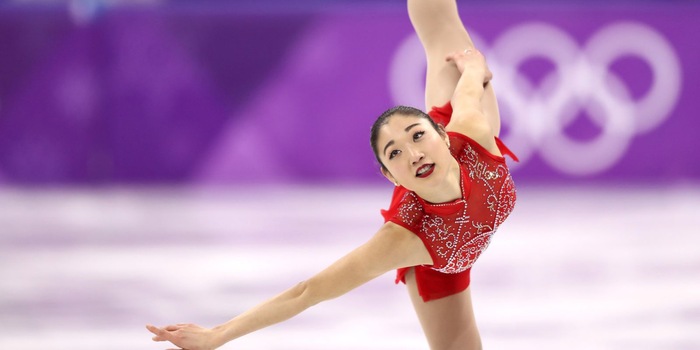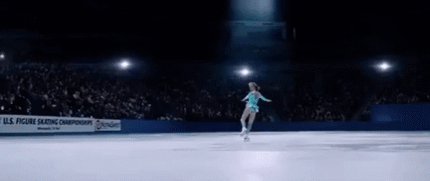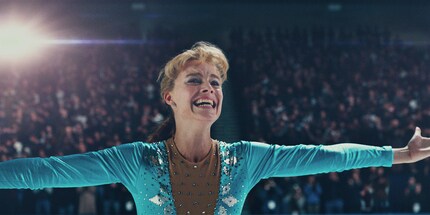
News + Trends
I, Tonya: "Those bitches didn't even know what hit'em."
by Luca Fontana

It demands everything from figure skaters: the triple Axel. Some careers have been spurred on by it, others ruined. That's why the most difficult jump in figure skating is so fascinating. And feared.
The triple Axel pushes the human body to the edge of the laws of physics. The infamous figure skating jump has recently become the talk of the town again thanks to the film "I, Tonya".
And as if the US American Mirai Nagasu had colluded with the filmmakers, she became the first American - and therefore the third woman ever - to land the jump at the Olympic Games shortly before the film's Oscar ceremony on 12 February 2018.
"That's not much. Damn little," says Edgar Pfanner.
He is the 1981 professional world champion in pairs skating, a soloist with Holiday on Ice and a Gold Test graduate in free skating*. When asked whether the triple Axel is the royal leap of figure skating, Pfanner replies: "Yes, without a doubt".
How could it be otherwise, because even super talent and current Olympic silver medallist Evgenia Medvedeva has shied away from learning the jump. To date, only eight women have successfully performed it in a competition. Only three of them could jump it right now, the others are too old.
Time to take a closer look at this amazing jump.
*Bronze, silver and gold tests provide information about the figure skaters' abilities. The gold test is the most difficult test in Switzerland. Passing it is a prerequisite for being accepted into the SEV (Swiss Ice Skating Association) elite. The top-ranked elite skaters represent Switzerland at the European and World Championships and the Olympics.
How to master the jump is explained by Edgar Pfanner, now technique, lunge and choreography coach at Eisclub Zürich:
"Technique, strength, height and exceptional rotational ability are the four elements that matter," he explains, "because without strength, the athletes can't reach the height, and without the correct technique, it's impossible to achieve the rotational speed required for three and a half rotations."

The triple Axel is named after its Norwegian inventor Axel Paulson. In its original form, the runner jumps forwards, performs a 1 ½ turn and lands backwards. In other words, half a turn more than the name implies, as they say "simple" Axel. The additional half turn comes from the fact that the jump is performed forwards - a special feature of the axel.
"Eighty per cent of figure skaters jump it to the left. This means that they jump with their left foot, anti-clockwise. Only about twenty per cent jump the other way around," says the professional figure skater.
Men have the advantage over women in that they are naturally more muscular. "The triple Axel is therefore part of the fixed repertoire of a renowned figure skater," says Pfanner firmly, "women usually jump it twice".
And if they do it three times, journalists and chroniclers pull out the history books.

The runner first glides backwards and outwards on her right foot. This means as much as travelling backwards (see image above). Shortly before the jump, the runner turns and looks forwards - the left foot becomes the supporting foot
.
The jump is performed over the edge of the skate with the left foot. Some jumps in figure skating are "tapped". Tapping with the tip of the ice skate helps the athletes to push themselves away from the ground.
This is also the case with the triple Lutz - a typical tapped jump:
In comparison, the triple Axel, without tapping:
The rotation itself consists of two phases: First, the athlete searches for the right height as quickly as possible. Only then can she pick up rotation speed. The rotation increases when the arms are crossed in front of the upper body and the left leg is crossed in front of the right. In other words: when body surface area and therefore air resistance are reduced.
As with all other jumps, the Axel is landed backwards. To slow down the rotation, the arms and legs are stretched out again. The skater takes off with her left foot, so she has to land on her right foot. First with the tip of the skate, then with the whole blade.
When gliding out, the left leg is stretched backwards. The exit spiral resembles a semicircle with a large diameter and the supporting leg remains bent.
US American Mirai Nagasu is one of eight women to have competed in the triple Axel. And only the third American woman after Tonya Harding to achieve this feat
Shortly before the 2018 Olympic Games, this video surfaced on social media:
"The triple Axel is unusual," says Mirai in the video, "a jump that is unlike any other". She is referring to the fact that the Axel is the only jump that is performed forwards. The result is a complex sequence of movements that requires strength and coordination from practically every single part of the body.
To learn the triple Axel, athletes use a device reverentially referred to as "the harness". The harness is connected to a cable that hangs down from the ceiling. This allows the athlete to be lifted into the air and rotated around their own axis in order to develop a sense of rotation and landing.

Once the skaters have mastered the harness, they move on to the "fishing pole harness". In principle, this works like the harness, only on the ice.
"But it's almost impossible to say how long it takes for an athlete to master the triple Axel after she has started harness training," explains Edgar Pfanner. How early in her career an athlete has to start training also varies from person to person:
"The triple axel is all about timing, coordination, muscles and the correct technique, which have to work in perfect harmony with each other," adds the former professional, who has trained a lot.The former professional, who has a lot of experience and career successes under his belt, explains, "but if the young figure skater at the age of around fourteen can't do the double Axel with a margin, then it's going to be difficult."
What Pfanner means by "margin" is quickly explained: in order to achieve the correct rotation speed, the body surface area must be reduced to a minimum. This is achieved by pressing the arms and legs against the body. Only those who can do the double Axel in such a way that their arms and legs can be pressed a little tighter against them if necessary can hope to do the triple Axel. "Having air to the top" is what Edgar Pfanner calls it.
But that alone is not enough. "Training doesn't just take place on the ice," says Pfanner, "but also in the gym, four to six times a week. And in the head".
This means not only a challenging fitness and training programme that matures the body and muscles for the royal leap, but also fearlessness and courage to go to the limits of what seems possible. The athletes have to accept that their inner feeling - their only companion through three and a half insane rotations - can deceive them, resulting in an extremely painful landing.
"Being fearless means not being afraid of making a mistake and attacking the jump fully," continues Edgar Pfanner in figure skating jargon, "a mental challenge that takes years to get through."
After all, the body has to be made to rotate around its own axis at over 30 kilometres per hour. When landing, forces similar to four times the body weight act on a runner that is three to four millimetres thick.

The jump is technically difficult because forward-facing jumps are very unusual for the skaters - as if a right-footed player had to shoot left-footed in football. And without tapping, it is difficult to gain the right height and thus gain enough time for the rotations. And as if there wasn't enough time pressure already, there's also the additional half turn.
Edgar Pfanner has also confirmed that men have a physical advantage. As a rule, they have more strength and can therefore push themselves higher into the air and thus gain enough time to perform three and a half rotations. This is why the triple axel is mandatory for men at a world championship.
"But," he adds cautiously, "that doesn't mean that the jump is a piece of cake for men."

The "triple Axel" demands everything the athletes have to give, above all an incredible physicality. Only years of specialised training can bring success - perhaps. If the training does not lead to the desired result, the athlete has sacrificed years of their already very short figure skating career.
Simply like that.
"The tragedy is that many athletes master the triple Axel at the age of thirteen or fourteen," mentions Edgar Pfanner, "but then the body starts to change. And very quickly too". Suddenly, the laws of physics no longer allow the triple axel, and the figure skaters can't even do anything about it.
"Yes, it's true," concludes Pfanner, "the triple Axel is definitely the king jump of figure skating."
.. you're gliding on the ice. The most difficult jump in figure skating lies ahead of you. Everything is at stake.
Concentration. Run-up. Pick up speed. Focus. And then - the jump. Over the left runner. You rise into the air - arms against your body, legs crossed. Your eyes are closed - the rotation is too fast to see anything other than streaks of light and colour anyway. Only your instincts guide you. Air is squeezed out of your lungs...
Now! Brake rotation: arms apart, the tip of your shoe touches the ice. Enormous forces threaten to pull you to the ground. Every muscle in your body screams in disgust. Your skates tip over. Just don't fall over! Keep your balance. Stop rotating. Let yourself slide out. You've made it!

What sounds like an incredible effort happens in a fraction of a second.
A split second for the history books.
I write about technology as if it were cinema, and about films as if they were real life. Between bits and blockbusters, I’m after stories that move people, not just generate clicks. And yes – sometimes I listen to film scores louder than I probably should.
From the latest iPhone to the return of 80s fashion. The editorial team will help you make sense of it all.
Show all